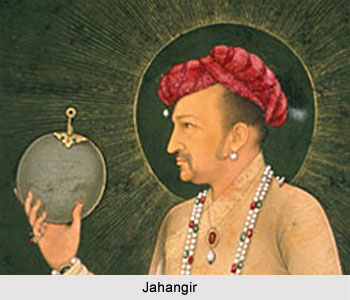 Economy in Mughal Empire was dependent on agriculture, trade and other industries. According to historians, since time immemorial agriculture has always been the backbone of economy of the country. Thus, in the Mughal era also agriculture was actually the biggest source of income. Moreover, it was also one of the main sources of livelihood of majority of the people in the country. The major crops that were grown during the Mughal era included millets, oilseeds, cereals, hemp, chilli, sugarcane, cotton, indigo, betel and other cash crops. Indigo cultivation was popular at that time in places various places like Agra and Gujarat. On the other hand, Ajmer was well known for the production of best quality sugarcane. Improved transport and communication facilities also helped the development of economy during the reign of Mughal emperors. There was tremendous demand for cash crops like silk and cotton as because the textile industry was flourishing during the Mughal period.
Economy in Mughal Empire was dependent on agriculture, trade and other industries. According to historians, since time immemorial agriculture has always been the backbone of economy of the country. Thus, in the Mughal era also agriculture was actually the biggest source of income. Moreover, it was also one of the main sources of livelihood of majority of the people in the country. The major crops that were grown during the Mughal era included millets, oilseeds, cereals, hemp, chilli, sugarcane, cotton, indigo, betel and other cash crops. Indigo cultivation was popular at that time in places various places like Agra and Gujarat. On the other hand, Ajmer was well known for the production of best quality sugarcane. Improved transport and communication facilities also helped the development of economy during the reign of Mughal emperors. There was tremendous demand for cash crops like silk and cotton as because the textile industry was flourishing during the Mughal period.
Further, during the reign of Mughal emperor Jahangir, Portuguese introduced the cultivation of tobacco and potato in India. Mughal emperor Babur introduced the cultivation of several other central Asian fruits in the country. Moreover, during the reign of Akbar Firoz Shah`s Yamuna canal was repaired for irrigation purposes. The Mughal Emperors preferred to settle in cities and towns. The artistic lifestyle of the Mughal rulers also encouraged art and architecture, handicrafts and trade in the country. During that era, the merchants and the trader class were divided into large business powers. During the Mughal era, trade both inside the country and outside grew tremendously. One of the main reasons cited by the historians for such development is the economic and political merger of India. Further, constitution of law and order over broad areas also created favourable environs for trade and commerce.
Rapid development of trade and commerce was also supported by the improved transport and communications systems. The Mughal rulers also encouraged the monetisation of the economy. Another factor that helped in the tremendous growth of business in that period was the arrival of European traders and growth of huge European trade. Fatehpur Sikri, Lahore and Agra were the chief centres of silk weaving whereas Cambay, Broach and Surat in Gujarat were the major ports for foreign trade and business. By the time of the Mughals, cities had grown in importance. Urbanisation and fixed markets also helped in expanding economy in Mughal Empire. Initially, the weekly market concept was popular. Eventually several trade centres in prosperous cities with the growth of the economy. Besides the metalled highways, river transport system was also considered significant for navigation throughout the year. Such initiatives by the rulers were vital contributing factors in the developed economy of the era.



















